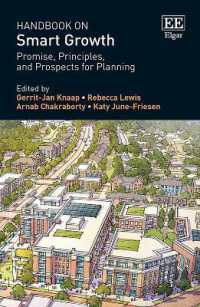- ホーム
- > 洋書
- > 英文書
- > Business / Economics
Full Description
Inequality is a global concern, for its social and human consequences, and its impact on the pace and pattern of economic growth. In India and Brazil, this issue has received increasing attention in recent years. In Brazil, inequality grew until the 1980s, when it reached extreme levels, but has since been declining, especially during the first decade of the twenty-first century. In India, inequality showed little change up to the 1980s, but has since been rising. These differences result from a variety of economic, social and political factors, which are examined in depth in this comparative study. The book examines inequality in overall distributions of income and expenditure, and disparities across gender, region, caste, race, and access to education. It compares the experience of the two countries, and draws conclusions on the types of policy frameworks and institutions that might lead to a more equitable pattern of growth.
Contents
List of tables; List of graphs and maps; Preface and acknowledgements; List of abbreviations; 1. Brazil and India: a mirror image of each other?; 2. Approach and method 3. India and Brazil in the decades; 4. India and Brazil from 1980 until the present; 5. Key divides and cleavages: ruptures, continuities, or adaptation?; 6. Inequality in social and economic context; 7. Post-script; Index.








